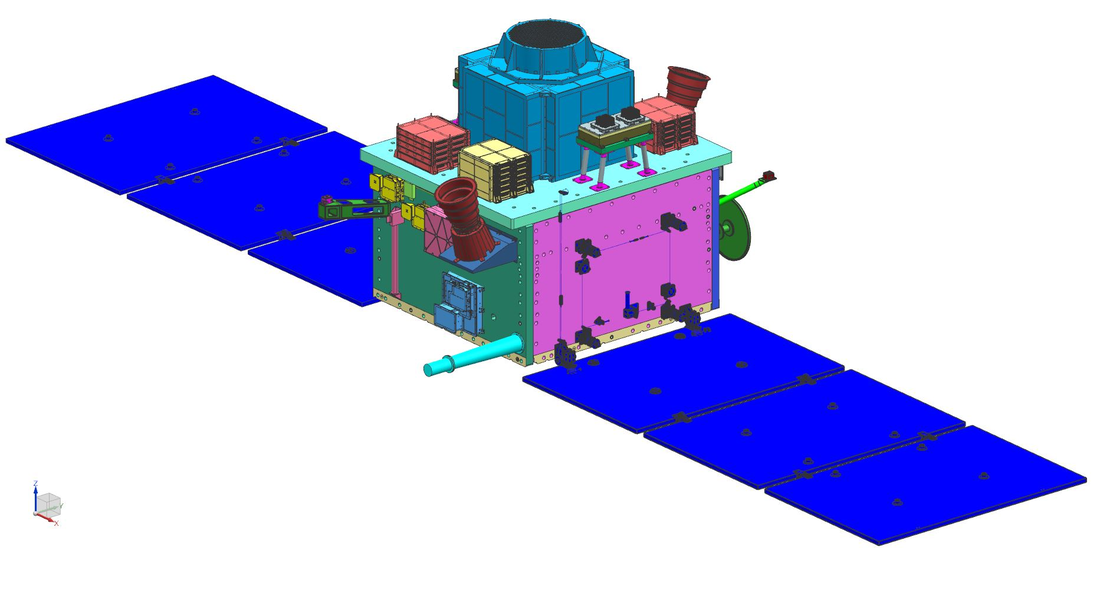Vamsi
New Member
- Joined
- Jun 27, 2020
- Messages
- 4,858
- Likes
- 29,461
The payload will be on the propulsion module which itself is based on Chandrayaan-2 orbiter.but in cy3 there is no any orbitor.
The payload will be on the propulsion module which itself is based on Chandrayaan-2 orbiter.but in cy3 there is no any orbitor.
But it won't stay in orbit. Entire assembly will land on moon and use Cdy-2 orbiter.The payload will be on the propulsion module which itself is based on Chandrayaan-2 orbiter.
Only the Lander and rover will land on the lunar surface. The propulsion module will stay there in the orbit for a while , for atleast 6 months, more over the PRATUSH payload which will be used in this mission is called PRATUSH-C3 . Its more of a tech demonstrator. It will be a precursor to the actual PRATUSH payload which will be launched some time in future.But it won't stay in orbit. Entire assembly will land on moon and use Cdy-2 orbiter.
Highest resolution camera in a for-civilian use satellite for now. Even that maybe debatable. Can we say with guarantee how much resolution camera does these US based Geo location companies' satellites are?Not one of the highest, but the highest resolution camera equipped satellite.
Radiation hardened processors and related electronics are generally very high lithography nodes ~180-200 nm or even bigger. These are not suitable for general public use.Radiation proof electronics is one of the areas where traditionally Japan and West dominated in terms of long life components, so kinda curious why the processor design and manufacturing ability is not trickling down into civilian gadgets even if they are 16 to 32 bit architecture. Granted we have pretty good theoretical and design base in electronics at an academic level including Indian origin NRIs.
True but if you have the practice then you would attempt to bring these things like microprocessors into local markets. It is just hard to imagine what is domestic 100% and what is not....even 60 to 90 nm was not long ago in consumer products.Radiation hardened processors and related electronics are generally very high lithography nodes ~180-200 nm or even bigger. These are not suitable for general public use.

The video for those interested:Isro is also developing a new Nano-Satellite launch vehicle (NSLV) apart from SSLV.
View attachment 88747
ISRO also got approval to develop fully reusable TSTO
View attachment 88748
View attachment 88749
HAVA.
View attachment 88750
View attachment 88751
Fully reusable Air - breathing TSTO , it needs a turbofan engine to take-off from runway.
View attachment 88752
View attachment 88753
Many changes as compared to last presentation.The video for those interested:
I’m afraid our Private players will be able to make a GSLV MK-III category launch vehicle not before 2035-2040. ISRO should make sure our private players never get late in heavy rockets as foreign companies are able to do this.Many changes as compared to last presentation.
View attachment 88754
We can develop a spin-off version of Air-breathing RLV without rocket engines as a Hypersonic UAV similar to SR-72 and 4-5 Kaveri engines will be sufficient for it.88752[/ATTACH]
That's too late to be honest , i could be comfortable with it if that's the timeline for hlv tooGovt already gave approval for it. We can see it by 2030 atleast ,if not earlier.View attachment 88756
They already make sub-parts ofcourse they can make.I’m afraid our Private players will be able to make a GSLV MK-III category launch vehicle not before 2035-2040. ISRO should make sure our private players never get late in heavy rockets as foreign companies are able to do this.
